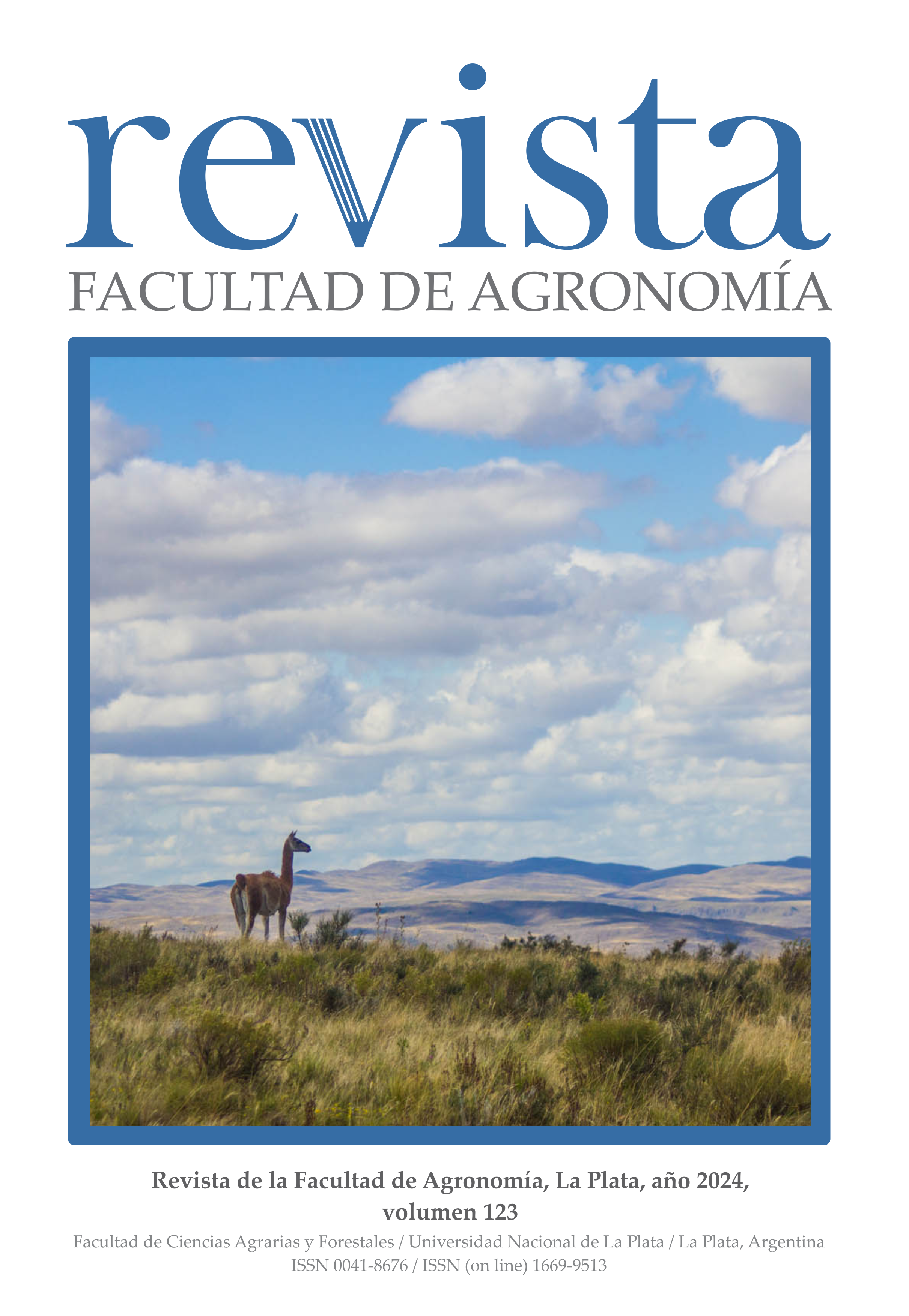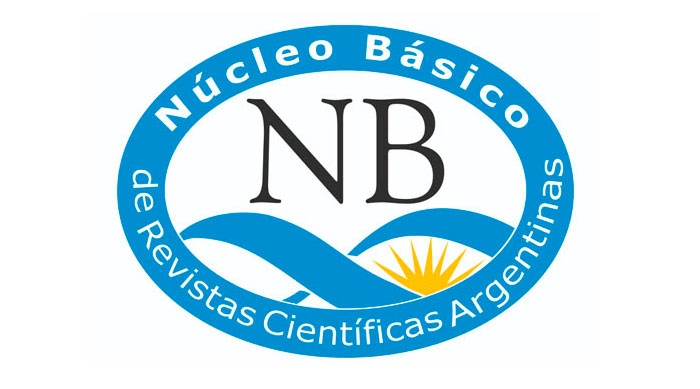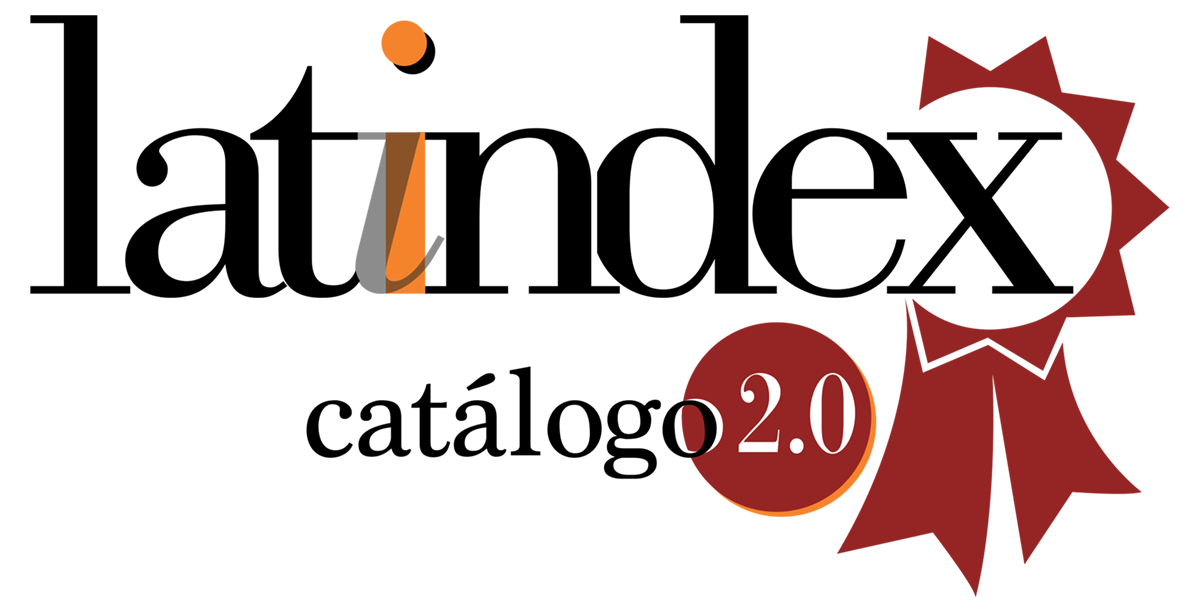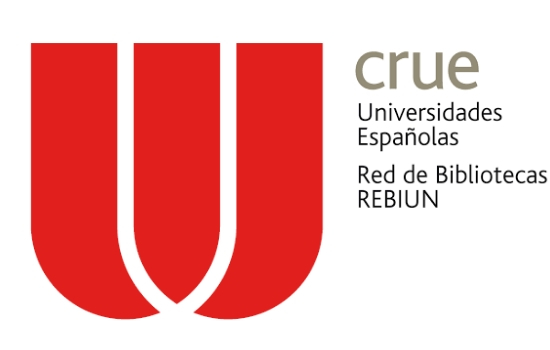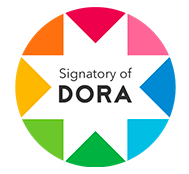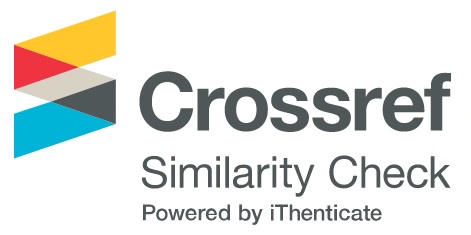O importância da cobertura florestal no cultivo de café orgânico na diversidade de polinizadores
DOI:
https://doi.org/10.24215/16699513e140Palavras-chave:
coffea arabica, conservação, minas gerais, rubiaceaeResumo
A polinização é um serviço ecossistêmico de grande importância para a conservação da biodiversidade. A maior parte dos alimentos consumidos por nós depende em algum grau ou totalmente da polinização realizada por abelhas. Embora o café seja autocompatível, estudos apontam que em cultivo sombreado e próximo a áreas florestadas, as flores recebem um maior número de visitantes, o que contribui para uma produção maior. O presente estudo teve como objetivo comparar a diversidade de insetos polinizadores, taxa de visitação e produção de café a pleno sol e sombreado na região do sul de Minas. As observações florais aconteceram nos meses de setembro e outubro de 2017, e setembro de 2018. As abelhas do gênero Trigona foram os visitantes florais mais abundantes no café com 116 visitas e Plebeia sp. foi a abelha mais frequente nas flores de café (70,3%). Os principais visitantes florais foram abelhas nativas. As áreas de cultivo mais sombreadas foram as que mais receberam visitas nas flores de café, e o talhão com a terceira maior porcentagem de sombreamento (17,53%), apresentou a maior média de tamanho das sementes.
Downloads
Métricas
Referências
Alves, V., Goulart, F., Jacobson, T. K. B. y Filho, R. J. M. (2016). Shade’s benefit: Coffee production under shade and full sun. Journal of Agricultural Science, 8 (11),11-19. http://dx.doi.org/10.5539/jas.v8n11p11
Amaral, E. (1972). Insect pollination of Coffea arabica L., and radius of action of Apis mellifera Linneaus 1758, in the collection of pollen in coffee plantations in bloom. Tesis. Departamento de Entomologia, Escola Superior de Agricultura “Luiz de Queiroz”, Piracicaba.
Armbrecht, I. y Gallego, M. C. (2007). Testing ant predation on the coffee berry borer in shaded and sun coffee plantations in Colombia. Entomologia Experimentalis et Applicata, 124 (3), 261-267. http://dx.doi.org/10.1111/j.1570-7458.2007.00574.x
Ataroff, M. y Monasterio, M. (1997). Soil erosion under different management of coffee plantations in the Venezuelan Andes. Soil Technology, 11, 1, 95-108. https://doi.org/10.1016/S0933-3630(96)00118-3
Badilla, F. y Ramírez, B. W. (1991). Polinización de café por Apis mellifera L. y otros insectos en Costa Rica. Turrialba, 41(3), 285-288.
Beer, J., Muschler, R., Kass, D. C. L. y Somarriba, E. J. (1998). Shade management in coffee and cacao plantations. Sistemas Agroflorestais, 38(1-3), 139-164.
Boreux, V., Kushalappa, C. G., Vaast, P. y Ghazoul, J. (2013). Interactive effects among ecosystem services and management practices on crop production: pollination in coffee agroforestry systems. Proceedings of the National Academy of Sciences, 110(21), 8387-8392. https://doi.org/10.1073/pnas.1210590110
Bosselmann, A. S. Dons, K., Oberthur, T.,Olsen, C. S., Raebild, A. y Usma, H. (2009). The influence of shade trees on coffee quality in small holder coffee agroforestry systems in Southern Colombia. Agriculture, Ecosystems & Environment, 129(1-3), 253-260. http://dx.doi.org/10.1016/j.agee.2008.09.004
Costanza, R., Groot, R., Braat, L., Kubiszewski., Fioramont, L., Sutton, P., Farber, S. y Grasso, M. (2017). Twenty years of ecosystem services: How far have we come and how far do we still need to go? Ecosystem Services, 28, 1-16. http://dx.doi.org/10.1016/j.ecoser.2017.09.008
Cunningham, S. A., Attwood, S. J., Bawa, K. S., Benton, T. G., Broadhurst, L. M., Didham, R. K., McIntyre, S., Perfecto, I., Samways, M. J., Tscharntke, T., Vandermeer, J., Villard, M. A., Young, A. G. y Lindenmayer, D. B. (2013). To close the yield-gap while saving biodiversity will require multiple locally relevant strategies. Agriculture, Ecosystems & Environment, 173, 20-27. http://dx.doi.org/10.1016/j.agee.2013.04.007
De Marco, P. y Coelho, F. M. (2004). Services performed by the ecosystem: forest remnants influence agricultural cultures’ pollination and production. Biodiversity and Conservation, 13(7), 1245-1255. http://dx.doi.org/10.1023/B:BIOC.0000019402.51193.e8
Empresa Brasileira de Pesquisa Agropecuária-Embrapa. (2018). Banco de dados climatológicos do Brasil. Recuperado el 20 agosto de 2018 de https://www.cnpm.embrapa.br/
Ferreira, F. M. C. (2008). A polinização como um serviço do ecossistema: uma estratégia para a conservação. [Tesis de doctorado no publicada]. Universidade de Minas Gerais.
Food and Agriculture Organization of the United Nations. (2004). Conservation and management of pollinators for sustainable agriculture. The international response. En B. Magalhães Freitas y J. O. Portela Pereira (Eds.), Solitary bees: Conservation, rearing and management for pollination (pp. 19-25). Imprensa Universitária, Universidade Federal do Ceará.
Fragoso, D. B., Guedes, R. N. C., Guedes, R. N. C., Picanço, M. C. y Zambolim, L. (2002). Insecticide use and organophosphate resistance in the coffee leaf miner Leucoptera coffeella (Lepidoptera: Lyonetiidae). Bulletin of Entomological Research, 92 (3), 203-212. http://dx.doi.org/10.1079/BER2002156
Garibaldi, L. A., Dewenter, I. S., Kremen, C., Morales, J. M., Bommarco, R., Cunningham, S. A., Carvalheiro, L. G., Chacoff, N. P., Dudenhöffer, J. H., Greenleaf, S. S., Holzschuh, A., Isaacs, R., Krewenka, K., Mandelik, K., Mayfield, M. M., Morandin, L. A., Potts, S. G., Ricketts, T. H., Szentgyörgyi, H., Viana, B. F., Westphal, C., Winfree, R. y Klein, A. M. (2011). Stability of pollination services decreases with isolation from natural areas despite honey bee visits. Ecology Letters, 14(10), 1062-1072. https://doi.org/10.1111/j.1461-0248.2011.01669.x
Giannini, T. C. Cordeiro, G. D., Freitas, B. M., Saraiva, A. M. y Imperatriz-Fonseca, V. L. (2015). The dependence of crops for pollinators and the economic value of pollination in Brazil. Journal of Economic Entomology, 108(3), 849-857. https://doi.org/10.1093/jee/tov093
Greenberg, R. Bichier, P., Angon, A. C., Macvean, C., Perez, R. y Cano, E. (2000). The impact of avian insectivory on arthropods and leaf damage in some Guatemalan coffee plantations. Ecology, 81(6), 1750-1755.
Haggar, J. Barrios, M., Bolaños, M., Merlo, M., Moraga, P., Munguia, R., Ponce, A., Romero, S., Soto, G., Staver, C. y Virginio, E. M. F. (2011). Coffee agroecosystem performance under full sun, shade, conventional and organic management regimes in Central America. Agroforestry Systems, 82(3), 285-301. http://dx.doi.org/10.1007/s10457-011-9392-5
Heard, T. A. y Hendrikz, J. K. (1993). Factors influencing flight activity of colonies of the stingless bee Trigona carbonaria (Hymenoptera, Apidae). Australian Journal of Zoology, 41(4), 343-353. http://dx.doi.org/10.1071/ZO9930343
Hilário, S. D., Imperatriz-Fonseca, V. L. y Kleinert, A. D. M. P. (2001). Responses to climatic factors by foragers of Plebeia pugnax Moure (in litt.) (Apidae, Meliponinae). Revista Brasileira de Biologia, 61(2), 191-196. http://dx.doi.org/10.1590/S0034-71082001000200003
Hipólito, J., Boscolo, D. y Viana, B. F. (2018). Landscape and crop management strategies to conserve pollination services and increase yields in tropical coffee farms. Agriculture, Ecosystems and Environment, 256(2016), 218–225. https://doi.org/10.1016/j.agee.2017.09.038
Imperatriz-Fonseca, V. L., Kleinert-Giovannini, A. y Pires, J. T. (1985). Climate variation influence on the flight activity of Plebeia remota Holmberg (Hymenoptera, Apidae, Meliponinae). Revista Brasileira de Entomologia, 29(3/4), 427-434.
Imperatriz-Fonseca, V. L., Canhos, D. A. L., de Araujo Alves, D. y Saraiv, A. M. (2012). Polinizadores e Polinização: um Tema Global. En V. L. Imperatriz-Fonseca, D. A. Lange Canhos, D. de Araujo Alves, A. M. Saraiv (Eds.), Polinizadores no Brasil: contribuição e perspectivas para a biodiversidade, uso sustentável, conservação e serviços ambientais (pp. 25-48). EDUSP.
Inoue, T., Salmah, S., Abbas, I. y Yusuf, E. (1985). Foraging behavior of individual workers and foraging dynamics of colonies of three Sumatran stingless bees. Researches On Population Ecology, 27(2), 373-392.
Jha, S. y Vandermeer J.H. (2009). Contrasting bee foraging in response to resource scale and local habitat management. Oikos, 118(8), 1174-1180. http://dx.doi.org/10.1111/j.1600-0706.2009.17523.x
Karp, D. S., Mendenhall, C. D., Sandí, R. F., Chaumont, N., Ehrlich, P. R., Elizabeth A. y Hadly, G. C. D. (2013). Forest bolsters bird abundance, pest control and coffee yield. Ecology Letters, 16(11), 1339-1347. http://dx.doi.org/10.1111/ele.12173
Klein, A. M., Dewenter, I. S. y Tscharntke, T. (2003). Fruit set of highland coffee increases with the diversity of pollinating bees. Proceedings of the Royal Society of London. Series B: Biological Sciences, 1518, 955-961. http://dx.doi.org/10.1098/rspb.2002.2306
Klein, A. M., Vaissière, B. E., Cane, J. H., Steffan-Dewenter, I., Cunningham, S. A., Kremen, C. y Tscharntke, T. (2007). Importance of pollinators in changing landscapes for world crops. Proceedings of the royal society B: Biological Sciences, 274(1608), 303-313. http://dx.doi.org/10.1098/rspb.2006.3721
Kleinert, A. M. P., Ramalho, M. Cortopassi, L. M., Ribeiro, M. F. y Imperatriz Fonseca, V. L. (2009). Abelhas sociais (Bombini, Apini, Meliponini). En A. R. Panizzi y J. R. P. Parra (Eds.), Bioecologia e nutrição de insetos: base para o manejo integrado de pragas (pp. 371-424). Embrapa Informação Tecnológica.
Kleinert-Giovannini, A. (1982). The influence of climatic factors on flight activity of Plebeia emerina Friese (Hymenoptera, Apidae, Meliponinae) in winter. Revista Brasileira de Entomologia, 26(1), 1-13.
Lin, B. B. (2007). Agroforestry management as an adaptive strategy against potential microclimate extremes in coffee agriculture. Meteorologia Agrícola e Florestal, 144(1-2), 85-94. http://dx.doi.org/10.1016/j.agrformet.2006.12.009
Lopes, P. R., Araújo, K. C. S., Ferraz. J. M. G., Lopes, I. M. y Fernandes, L. G. (2012). Produção de café agroecológico no sul de Minas Gerais: sistemas alternativos à produção intensiva em agroquímicos. Revista Brasileira de Agroecologia, 7(1), 25-38.
Malerbo-Souza, D. T., Couto, R. H. N., Couto, L. A. y Souza, J. C. (2003). Atrativo para as abelhas Apis mellifera e polinizacão em café (Coffea arabica L.). Brazilian Journal of Veterinary Researchand Animal Science, 272-278. http://dx.doi.org/10.1590/S1413-95962003000400006
Malerbo-Souza, D. T. y Silva, F. A. S. (2011). Comportamento forrageiro da abelha africanizada Apis mellifera L. no decorrer do ano. Acta Scientiarum, Animal Sciences, 33(2), 183-190. http://dx.doi.org/10.4025/actascianimsci.v33i2.9252
Manson, R. H. (Ed.). (2008). Agroecosistemas cafetaleros de Veracruz: biodiversidad, manejo y conservación. Instituto Nacional de Ecología de México.
Marques, M. F., Menezes, G. B., Deprá, M. S., Delaqua, G. C. G., Hautequestt, A. P. y Moraes, M. C. M. (2015). Polinizadores na agricultura: ênfase em abelhas. Funbio.
Michener, C. D (2000). As abelhas do mundo. (Vol. 1). JHU press.
Moreira, C. F. (2009). Sustentabilidade de sistemas de produção de café sombreado orgânico e convencional. [Tesis de Doctorado, Universidad de Universidad de São Paulo]. https://doi.org/10.11606/T.91.2009.tde-22052009-151446
Muschler, R. G. (2001). Shade improves coffee quality in a sub-optimal coffee-zone of Costa Rica. Agroforestry Systems, 51(2), 131-139. http://dx.doi.org/10.1023/A:1010603320653
Nogueira-Neto, P., Carvalho, A. y Antunes Filho, H. (1959). Efeito da exclusão dos insetos polinizadores na produção do café Bourbon. Bragantia, 18, 441–468.
Ngo, H. T., Mojica, A. C. y Packer, L. (2011). Coffee plant – pollinator interactions: a review. Canadian Journal of Zoology, 89(8), 647-660. https://doi.org/10.1139/z11-028
Ngo, H. T., Gibbs, J., Griswold, T. y Packer, L. (2013). Evaluating bee (Hymenoptera: Apoidea) diversity using Malaise traps in coffee landscapes of Costa Rica. The Canadian Entomologist, 145(4), 435-453. http://dx.doi.org/10.4039/tce.2013.16
Ollerton, J., Winfree, R. y Tarrant, S. (2011) How many flowering plants are pollinated by animals? Oikos,120(3), 321-326. https://doi.org/10.1111/j.1600-0706.2010.18644.x
Perfecto, I., Rice, R. A., Greenberg, R. y Van der Voort, M. E. (1996). Shade coffee: A disappearing refuge for biodiversity: Shade coffee plantations can contain as much biodiversity as forest habitats. BioScience, 46(8), 598-608. https://doi.org/10.2307/1312989
Perfecto, I., Vandermeer, J. H., Bautista, G. L., Nunñez, G. I., Greenberg, R., Bichier, P. y Langridge, S. (2004). Greater predation in shaded coffee farms: The role of resident neotropical birds. Ecology, 85(10), 2677-2681. http://dx.doi.org/10.1890/03-3145
Potts, S. G., Biesmeijer, J. C., Kremen, C., Neumann, P., Schweiger, O. y Kunin, W. E. (2010). Global pollinator declines: Trends, impacts and drivers. Trends in Ecology & Evolution, 25(6), 345-353. https://doi.org/10.1016/j.tree.2010.01.007
Priess, J. A., Mimler, M., Klein, A. M., Schwarze, S., Tscharntke, T. y Steffan-Dewenter, I. (2007). Linking deforestation scenarios to pollination services and economic returns in coffee agroforestry systems. Ecological Applications, 17(2), 407-417. https://doi.org/10.1890/05-1795
Rader, R., Ignasi B., Garibaldi, L. A., Garratt, M. P. D., Howlett, B. G., Winfree, R., Cunningham, S. A., Mayfield, M. M., Arthur, A. D., Andersson, G. K. S., Bommarco, R., Brittain, C., Carvalheiro, L. G., Chacoff, N. P., Entling, M. H., Foully, B., Freitas, B. M., Gemmill-Herren, B., Ghazoul, J., ... y Woyciechowski, M. (2016). Non-bee insects are important contributors to global crop pollination. Proceedings of the National Academy of Sciences, 113(1), 146-151. https://doi.org/10.1073/pnas.1517092112
Raw, A. y Free, J. B. (1977). The pollination of coffee (Coffea arabica) by honeybees. Tropical Agriculture, 54(4), 365-707.
Rech, A. R., Martins, A. C. y Leite, F. B. (2014). Interações entre plantas e polinizadores sob uma perspectiva filogenética. En A. R. Rech., A. C. Martins, F. B. Leite y I. C. Machado (Orgs.), Biologia da polinização (pp. 399-410). Editora Projeto Cultural.
Righi, C. A. y Bernardes, M. S. (Eds.). (2015). Cadernos da Disciplina Sistemas Agroflorestais. ESALQ, Universidad de San Paulo.
Ricketts, T. H. (2004). Tropical forest fragments enhance pollinators activity in nearby coffee crops. Conservation Biology, 18(5), 1262-1271. http://dx.doi.org/10.1111/j.1523-1739.2004.00227.x
Roubik, D. W. (2018). The pollination of cultivated plants. A compendium for practitioners. (Vol. 2). Food and Agriculture Organization of the United Nations.
Saturni, F. T., Jaffé, R. y Metzger, J. P. (2016). Landscape structure influences bee community and coffee pollination at different spatial scales. Agriculture, Ecosystems & Environment, 235, 1-12. http://dx.doi.org/10.1016/j.agee.2016.10.008
Staver, C., Guharay, F., Monterroso, D. y Muschler, R. G. (2001). Designing pest-suppressive multistrata perennial crop systems: Shade-grown coffee in Central America. Agroforestry Systems, 53(2), 151-170. http://dx.doi.org/10.1023/A:1013372403359
Silveira, F. A., Melo, G. A. y Almeida, E. A. (2002). Abelhas brasileiras: sistemática e identificação. Guilherme Carnevale Carmona.
Vaast, P., Bertrand, B., Perriot, J. J., Guyot, B. y Génard, M. (2006). Fruit thinning and shade improve bean characteristics and beverage quality of coffee (Coffea arabica L.) under optimal conditions. Journal of the Science of Food and Agriculture, 86(2), 197-204. https://doi.org/10.1002/jsfa.2338
Vandermeer, J., Perfecto, I. y Philpott, S. (2010). Ecological complexity and pest control in organic coffee production: Uncovering an Autonomous ecosystem service. BioScience, 60(7), 527-537. http://dx.doi.org/10.1525/bio.2010.60.7.8
Veddeler, D., Klein, A. M. y Tscharntke, T. (2006). Contrasting responses of bee communities to coffee flowering at different spatial scales. Oikos, 112(3), 594-601. https://doi.org/10.1111/j.0030-1299.2006.14111.x
Vega, F. E., Infante, F., Castillo, A. y Jaramillo, J. (2009). The coffee berry borer, Hypothenemus hampei (Ferrari) (Coleoptera: Curculionidae): A short review, with recent findings and future research directions. Terrestrial Arthropod Reviews, 2(2), 129. http://dx.doi.org/10.1163/187498209X12525675906031
Vergara, C. H. y Badano E. I. (2009). Pollinator diversity increases fruit production in Mexican coffee plantations: The importance of rustic management systems. Agriculture, Ecosystems & Environment, 129(1-3), 117-123. http://dx.doi.org/10.1016/j.agee.2008.08.001
Witter, S., Nunes-Silva, P., Blochtein, B., Lisboa, B. B. y Imperatriz-Fonseca, V. L. (2014). A produtividade agrícola e os polinizadores. As abelhas e a agricultura. EDIPUCRS.
Wolowski, M., Agostini, K., Rech, A. R., Varassin, I. G., Maués, M., Freitas, L., Carneiro, L. T., Bueno, R. O., Consolaro, H., Carvalheiro, L., Saraiva, A. M. y Silva, C. I. (2019). Relatório temático sobre polinização, polinizadores e produção de alimentos no Brasil. Editora Cubo.
Publicado
Como Citar
Edição
Seção
Licença
Copyright (c) 2024 Gleycon Velozo da Silva, Rafaela Oliveira de Jesus, Marina de Lima Mohallem, Marina Wolowski, Tatiana Oliveira Ramos

Este trabalho está licenciado sob uma licença Creative Commons Attribution-NonCommercial-ShareAlike 4.0 International License.
A partir de 2019 (Vol. 118 número 2) los artículos se publicarán en la revista bajo una licencia Creative Commons Atribución- NoComercial-CompartirIgual 4.0 Internacional (CC BY-NC-SA 4.0)
Acorde a estos términos, el material se puede compartir (copiar y redistribuir en cualquier medio o formato) y adaptar (remezclar, transformar y crear a partir del material otra obra), siempre que a) se cite la autoría y la fuente original de su publicación (revista y URL de la obra), b) no se use para fines comerciales y c) se mantengan los mismos términos de la licencia.
Previo a esta fecha los artículos se publicaron en la revista bajo una licencia Creative Commons Atribución (CC BY)
En ambos casos, la aceptación de los originales por parte de la revista implica la cesión no exclusiva de los derechos patrimoniales de los/as autores/as en favor del editor, quien permite la reutilización, luego de su edición (posprint), bajo la licencia que corresponda según la edición.
Tal cesión supone, por un lado, que luego de su edición (posprint) en Revista de la Facultad de Agronomía las/os autoras/es pueden publicar su trabajo en cualquier idioma, medio y formato (en tales casos, se solicita que se consigne que el material fue publicado originalmente en esta revista); por otro, la autorización de los/as autores/as para que el trabajo sea cosechado por SEDICI, el repositorio institucional de la Universidad Nacional de La Plata, y sea difundido en las bases de datos que el equipo editorial considere adecuadas para incrementar la visibilidad de la publicación y de sus autores/as.
Asimismo, la revista incentiva a las/os autoras/es para que luego de su publicación en Revista de la Facultad de Agronomía depositen sus producciones en otros repositorios institucionales y temáticos, bajo el principio de que ofrecer a la sociedad la producción científica y académica sin restricciones contribuye a un mayor intercambio del conocimiento global.

